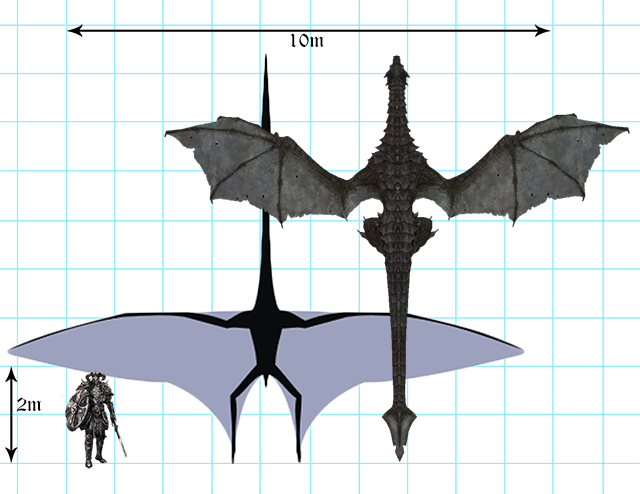This week, I really wanted to find out if dragons could fly. It started out with a simple hypothesis: “The overall mass and the subsequent small wingspan of a dragon would prevent it from gliding any significant distance let alone take off for flight. Additionally, I believed that there was no historical evidence to support dragon flight at all.”
All you dragon lovers out there will be happy to know that I was wrong about the latter part and only halfway wrong about the first part. And by in large, I was wrong because of a little world-eating monster called Alduin from Elder Scrolls: Skyrim.
Bear in mind that there certainly situations in dragon lore where I am completely correct. The biggest example would be Smaug. There is no way a dragon that big could exist let alone fly, but there are also tiny dragons that shouldn’t exist either like Spyro. There is no way that tiny guy should be able to fly unless his wings were the shape and speed of a hummingbird.
However, it was Alduin that made me question a few things. So let’s science the shit out of Skyrim dragon flight!
Glide ratio
I started with glide ratio. This is the number of meters that a winged object could travel horizontally before it falls one meter toward the earth. A good hang glider will have the glide ratio of 15m and something like a glide suit will have a ratio of 2.5m. So my math was going to revolve around how the mass of a dragon like Alduin couldn’t sustain flight because the surface area of the wings just wasn’t big enough.
The science editor over at Nerdist, Kyle Hill, talked about something similar in his episode of Because Science about Batman’s suit. He postulated that the wingspan would have to be 5.6m to carry a 95kg man at a 7.5m glide ratio. My rough estimations first put Alduin at about three times the mass of a human. This means that to maintain a similar glide ratio Alduin would have to have a wingspan at about three times that of Kyle Hill’s batman scenario.
Any picture of Alduin will show you that he doesn’t have a 16.5m wingspan. In fact, if you take a look at my size comparison chart below, you can see that his wingspan is about 9.75m and his wings as far from estimated 39m2 of surface area to make up for the lost wingspan. In fact, to make up for that loss, the dragon’s wings would probably have to stretch down the length of its tail.
Lighter than air
There is no way that I rationalize a dragon like Alduin flying without some sort of magic involved. I even took into account that it could be possible for a dragon to build up gas inside its body, like methane, a naturally produced organic chemical. Some have claimed that it’s possible that dragons produce fire that way, which we might get into in another article, but even taking that into account it still doesn’t make a lot of sense. At best, methane — or even hydrogen or helium — would only give a dragon about 8% more buoyancy. Rough estimations suggest that a dragon would have almost have to double the surface area of it body to give the beast enough lift.
That kind of expansion offers up another issue: the scales. Since dragon’s are essentially flying lizards, that means that they have scales. And a major attribute for dragons is their ability to take damage, which means their scales should be very dense. Filling its body up with gas would actually make the scales less dense because they would be more spread out.
For all intents and purposes, I had written off the dragon as being unable to fly until I read more about the real-world example of the quetzalcoatlus.

Quetzalcoatlus
You might not be familiar with this dinosaur. It wasn’t one of the big ones that I was taught about in school, but it’s massive. It’s about three times as massive as any other pterosaur putting it at about 250kg, just less than my first estimations for the weight of Alduin. And paleontologists believe that this dinosaur could fly, and fly really well. There was my real-word example, and it seemed to counter many of my arguments about why a dragon couldn’t fly.
It was almost exactly the same size as Alduin in both length and wingspan, and it weighed about the same. OK, maybe dragons could fly, if this thing could. However, there are a couple more counters to that argument. First, the surface area of the wings of a quetzalcoatlus is much more than that of Alduin, almost double by my estimation. And then based on the body mass of the quetzalcoatlus, I had to reexamine the weight of the dragon. Taking into account that the bone density of a dragon might be just as light as the dinosaur, but it nearly has twice the mass, making the dragon weigh about 500kg. That’s far too large to be able to get lift.
I have to lean toward the idea that a dragon could not fly. Is there anything I missed? Science, of course, lives to be proven wrong. So science the shit out of this yourself, and let me know your thoughts in the comments below.







Published: May 30, 2016 09:42 am